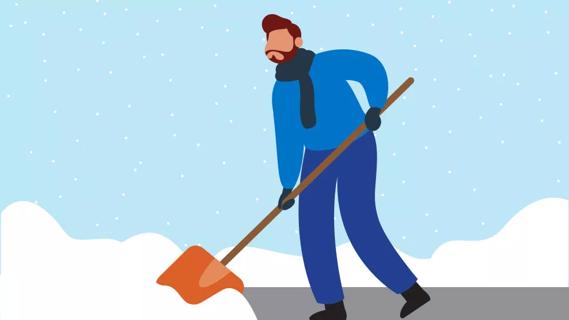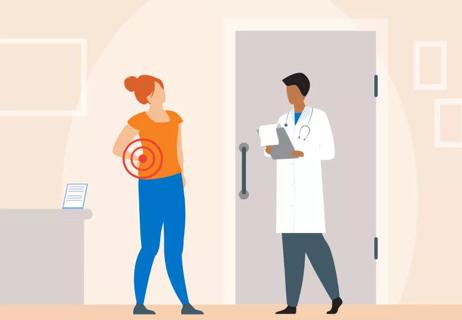Everyone needs a little extra TLC for their aging spine

Back pain can be crippling and can deter you from doing your daily activities. Whether you’re aware of it or not, your spine starts to age in your 20s and 30s and it continues throughout the rest of your life. A little preventive effort could go a long way to reducing your chances of suffering from debilitating back pain.
Advertisement
Cleveland Clinic is a non-profit academic medical center. Advertising on our site helps support our mission. We do not endorse non-Cleveland Clinic products or services. Policy
We all experience degenerative changes, but the good news is that these changes don’t always cause serious problems, says spine specialist Kush Goyal, MD.
“There is no actual disease called degenerative disk disease,” says Dr. Goyal. “DDD is not a diagnosis, but more representative of natural aging in the spine that we all eventually experience. Natural degenerative changes lead to pain in the back and/or legs. However, more often than not, these changes do not cause any symptoms.”
Everyone’s spine ages, but for different reasons. One of the common problems is arthritis.
“You can potentially see the similar degenerative changes on an MRI of the spine in any two 50-year-old patients, one with symptoms and one without symptoms,” he says.
A clinical exam is the best time for your doctor to learn about your history and to also do a physical exam. If your doctor says you have degenerative changes, it’s typically some form of arthritis of the spine.
The percentage of patients with a significant amount of degenerative changes increases as people age. For example, in the average 80-year-old, more than 80% will have a significant amount of arthritis in their spine.
“Another common degenerative change is that the disc or cushions between the major bones in the spine become smaller,” says Dr. Goyal. “They may appear to have less height and bulge and the color of the discs on MRI or the water content of the discs may decrease with time as well.”
Advertisement
If you are experiencing any of the following red flags, it’s time to consult with your doctor or spine specialist:
As you age, there are a number of steps you can take to maintain your spine health:
While it may be tempting to stay in bed when you’re in pain, it’s important to remember to stay as active as possible and avoid being in bed for several days. The weaker your muscles get, the more back pain and problems you’ll have.
“You want to stay active and continue walking and doing your normal activities,” he says. “Then do other activities such as exercising as tolerated. Talk to your doctor before starting exercise again.”
A little preventive effort could go a long way to reducing your chances of suffering from debilitating back pain. If you do suffer from crippling back pain, there are a few treatment options available. Anti-inflammatory drug or pain relievers, physical therapy or surgery are possible treatments to help relieve your pain, according to the Arthritis Foundation.
“Nerves, muscles and ligaments from the spine provide support to your entire body,” says Dr. Goyal. “That is why a healthy back is so important to your overall health.”
Advertisement
Learn more about our editorial process.
Advertisement

It’s always a good idea to let a healthcare provider know about any back pain you’re experiencing, especially if it results from trauma or persists longer than three months

With repeat injections over time, you may be able to slow the development of new wrinkles

Stretch before heading outside, keep proper form and avoid jerking or twisting to throw snow

The cosmetic injection may help train your muscles out of frowning, but there’s no hard data to say for sure

From physical and biofeedback therapy to nerve ablations and blocks, there are many nonsurgical options for managing back pain

Get moving, use cold packs, and try yoga and stretches to ease back pain

Arthritis, migraines and endometriosis are common causes of chronic pain

Living longer is more than just growing older — it’s also about living life to its fullest

Type 2 diabetes isn’t inevitable with these dietary changes

Applying a hot or cold compress can help with pain